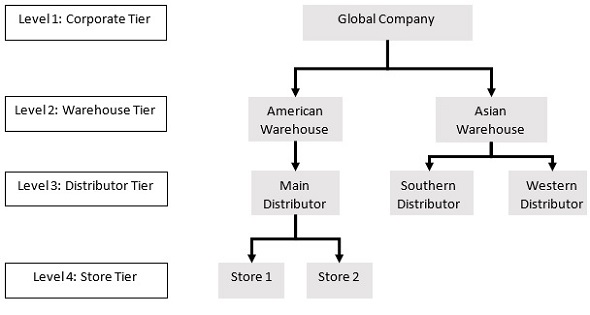Buying Structure - Definition, Importance & Example
What is Buying Structure?
Buying Structure is the organisational structure of the buying authorities within a company. There are different tiers in the buying structure. Each level or each tier in the buying structure has its own price negotiations and discounts. When buying structure is set up, it enables a parent children relationship among the customer address-book numbers within an organisational structure.
It can be set up when we want the price of the distributor i.e. parent is same as that of the stores i.e. children. The buying structure is updated each time a new company is added or an existing company changes its position from one tier to another.
Importance of Buying Structure
Buying structure is used to set a customer’s price with the organisational structure. It is used to cater individual customer specific pricing. Buying Structure helps in maintaining a common price among different tiers.
Read More
Set Up for Buying Structure
1. Specify the parent/child relationships that the customer address-book numbers have while defining the customer’s buying structure.
2. Set up tier descriptions. Specify:
i) Address-book number of the parent for any address-book number of the child
ii) Beginning and ending effective dates should be specified for relationship between a ‘parent address-book’ number and a ‘child address-book number’.
iii) Names of the different levels of the structure.
3. Then, specify the adjustment retrieval method and structure type for sales pricing in the pricing constants.
4. Define the direct price adjustments for each address book record and each tier in the structure.

Example of Buying Structure
|
Entity |
Address Book Number |
Tier level |
Inheritance |
Applicable Price adjustment |
|
Global company |
380 |
1 |
Yes |
Global Company’s distribution centres in level 3 receives a 3% off the cost price of all items as ‘company discount’. |
|
American Warehouse |
381 |
2 |
Yes |
American Warehouse gets a ‘regional rebate’ of 2.00 USD per unit when sales of Product X reach 20,000 units. |
|
Main Distributor |
384 |
3 |
Yes |
Central Distributor receives a 5% as ‘promotional discount’. |
|
Store A |
387 |
4 |
Yes |
Store A receives a 7% off the cost price when ordering atleast 150 units of Product X. |
Let store 1 places an order of 200 units of Product X. For price adjustments and calculation of net unit price, buying structure is used by the system.
|
Price Adjustment |
Unit Price |
Other |
|
Cost Price |
10.00 USD |
|
|
Store Discount (7%), Store A |
0.7 |
|
|
Promotional discount (5%) |
0.5 |
|
|
Regional rebate (tiered rebate) |
|
2.00 USD |
|
Corporate discount (3%) |
0.3 |
|
|
Net Unit Price |
8.50 USD |
|
The above example of buying structure highlights the breaking up of the price from the company to the retail stores.
Hence, this concludes the definition of Buying Structure along with its overview.
This article has been researched & authored by the Business Concepts Team. It has been reviewed & published by the MBA Skool Team. The content on MBA Skool has been created for educational & academic purpose only.
Browse the definition and meaning of more similar terms. The Management Dictionary covers over 1800 business concepts from 5 categories.
Continue Reading:
What is MBA Skool?About Us
MBA Skool is a Knowledge Resource for Management Students, Aspirants & Professionals.
Business Courses
Quizzes & Skills
Quizzes test your expertise in business and Skill tests evaluate your management traits
Related Content
All Business Sections
Write for Us